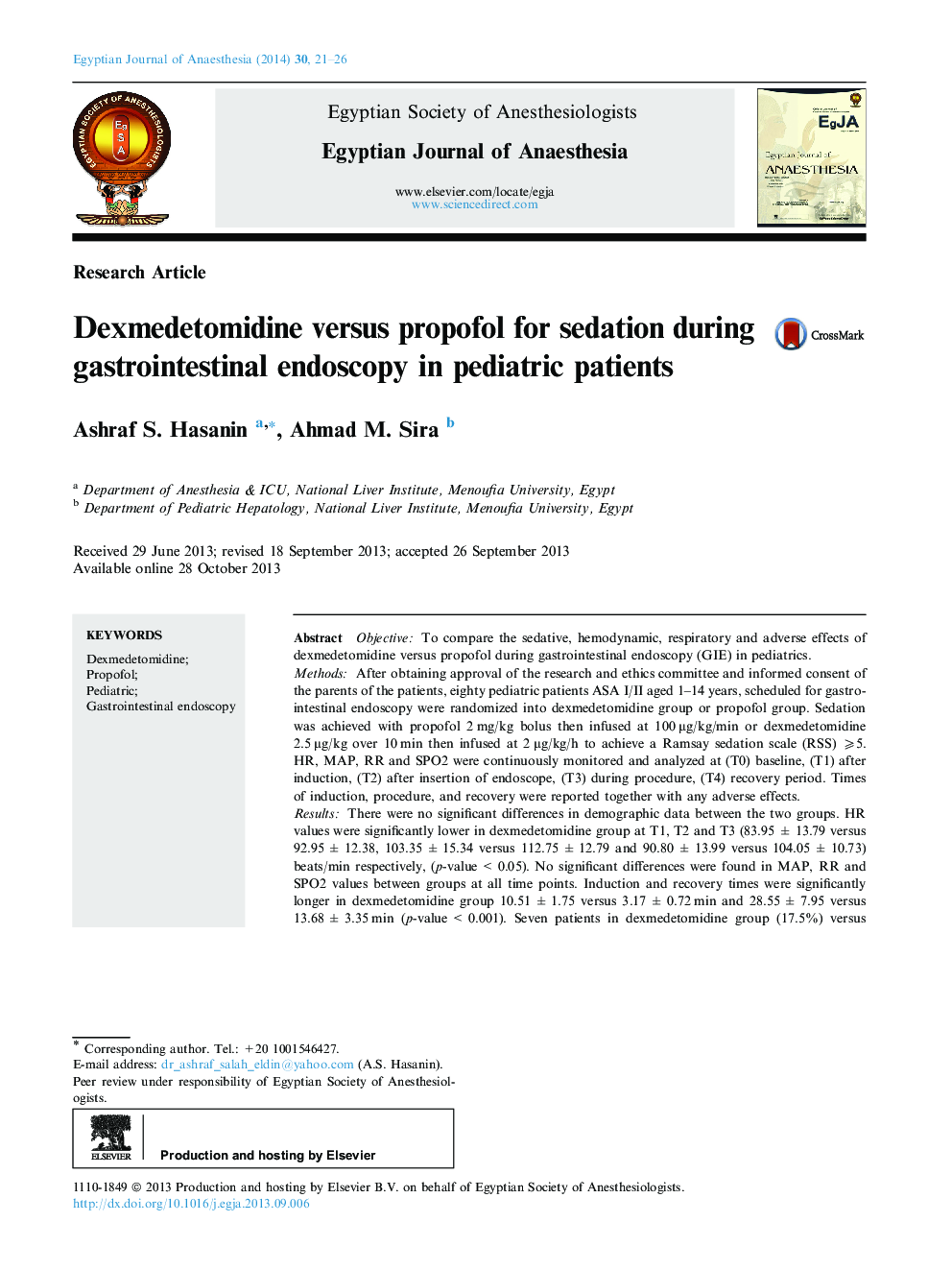| کد مقاله | کد نشریه | سال انتشار | مقاله انگلیسی | نسخه تمام متن |
|---|---|---|---|---|
| 2756335 | 1567418 | 2014 | 6 صفحه PDF | دانلود رایگان |

ObjectiveTo compare the sedative, hemodynamic, respiratory and adverse effects of dexmedetomidine versus propofol during gastrointestinal endoscopy (GIE) in pediatrics.MethodsAfter obtaining approval of the research and ethics committee and informed consent of the parents of the patients, eighty pediatric patients ASA I/II aged 1–14 years, scheduled for gastrointestinal endoscopy were randomized into dexmedetomidine group or propofol group. Sedation was achieved with propofol 2 mg/kg bolus then infused at 100 μg/kg/min or dexmedetomidine 2.5 μg/kg over 10 min then infused at 2 μg/kg/h to achieve a Ramsay sedation scale (RSS) ⩾5. HR, MAP, RR and SPO2 were continuously monitored and analyzed at (T0) baseline, (T1) after induction, (T2) after insertion of endoscope, (T3) during procedure, (T4) recovery period. Times of induction, procedure, and recovery were reported together with any adverse effects.ResultsThere were no significant differences in demographic data between the two groups. HR values were significantly lower in dexmedetomidine group at T1, T2 and T3 (83.95 ± 13.79 versus 92.95 ± 12.38, 103.35 ± 15.34 versus 112.75 ± 12.79 and 90.80 ± 13.99 versus 104.05 ± 10.73) beats/min respectively, (p-value < 0.05). No significant differences were found in MAP, RR and SPO2 values between groups at all time points. Induction and recovery times were significantly longer in dexmedetomidine group 10.51 ± 1.75 versus 3.17 ± 0.72 min and 28.55 ± 7.95 versus 13.68 ± 3.35 min (p-value < 0.001). Seven patients in dexmedetomidine group (17.5%) versus one patient in propofol group (2.5%) showed unwanted movement (p-value 0.057), and no cases in dexmedetomidine group demonstrated oxygen desaturation versus 6 patients (15%) within propofol group (p-value 0.026).ConclusionDexmedetomidine sedation during GIE provides more respiratory safety and HR stability presenting itself as a suitable alternative agent especially for the relatively longer procedures.
Journal: Egyptian Journal of Anaesthesia - Volume 30, Issue 1, January 2014, Pages 21–26